Click on images to enlarge
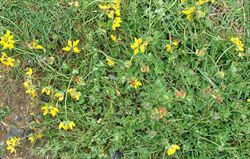
habit (Photo: Sheldon Navie)
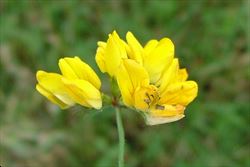
close-up of flowers (Photo: Sheldon Navie)
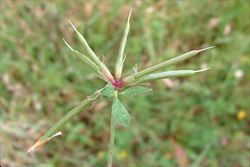
immature fruit (Photo: Sheldon Navie)
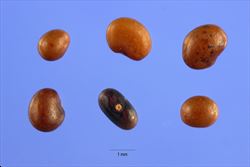
close-up of seeds (Photo: Steve Hurst at USDA PLANTS Database)
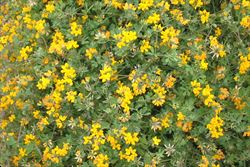
habit of the very similar Lotus preslii (Photo: Sheldon Navie)
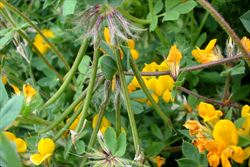
the longer fruit and longer sepals of Lotus preslii (Photo: Sheldon Navie)
Scientific Name
Lotus corniculatus L. var. corniculatus
Synonyms
Lotus corniculatus L.Lotus corniculatus L. var. hirsutus W.D.J. Koch
Family
Fabaceae (Queensland, the ACT, Victoria, Tasmania, and the Northern Territory)Fabaceae: sub-family Faboideae (New South Wales)Leguminosae (South Australia)Papilionaceae (Western Australia)
Common Names
birdfoot deervetch, bird's foot deervetch, bird's foot lotus, bird's foot trefoil, bird's-foot trefoil, birdsfoot trefoil, birdsfoot deervetch, bird's-foot-trefoil, broadleaf birdsfoot trefoil, cat's clover, common bird's-foot trefoil, crowtoes, eggs-and-bacon, ground honeysuckle, groundhoneysuckle
Origin
Native to northern and eastern Africa (i.e. northern Algeria, Morocco, Tunisia, Ethiopia, Sudan, Kenya and Tanzania), most of Europe, western Asia (i.e. Afghanistan, Cyprus, Iran, Iraq, Turkey, Armenia, Azerbaijan, Georgia, southern Russia, Kazakhstan, Tajikistan and Turkmenistan), the Indian sub-continent (i.e. India, Nepal and Pakistan) and eastern Asia (i.e. Mongolia, China, Japan, Korea and Taiwan).
Naturalised Distribution
Widely naturalised in the temperate regions of south-eastern Australia. It is common in southern and eastern New South Wales, the ACT, Victoria, Tasmania and south-eastern South Australia. It has also occasionally become naturalised in other parts of inland New South Wales and was naturalised in the cooler parts of south-eastern Queensland, but has not been recorded in this region for many years.
Naturalised overseas in New Zealand, the USA, Canada and southern South America (i.e. Argentina and Chile).
Notes
Common bird's-foot trefoil (Lotus corniculatus var. corniculatus) is regarded as an environmental weed in Victoria and New South Wales, and as a potential environmental weed or "sleeper weed" in other parts of southern Australia. This widely cultivated pasture plant has escaped cultivation and become a weed of roadsides, disturbed sites, waste areas, coastal environs, grasslands and wetlands. In many areas it is not considered as an invasive species, but it causes problems in certain habitats (e.g. grasslands and wetlands). For example, common bird's-foot trefoil (Lotus corniculatus var. corniculatus) can out-compete other pasture species, particularly on infertile soils, but is generally not as invasive on fertile soils.
This species is seen as a very serious threat to one or more plant communities in Victoria, is a common weed of floodplain riparian woodlands and swampy riparian woodlands, and is of particular concern in peatlands and spring soak wetlands in the highland regions of this state. Common bird's-foot trefoil (Lotus corniculatus var. corniculatus) also appears on local and regional environmental weed lists (i.e. Knox City, Banyule City and the Goulburn Broken Catchment) and is present in conservation areas (e.g. Green Hills Nature Conservation Reserve) in Victoria.
In New South Wales, it is mostly a weed of grasslands though it has been recorded as a weed in Lane Cove National Park near Sydney. In some parts of the USA, common bird's-foot trefoil (Lotus corniculatus var. corniculatus) forms dense mats of vegetation which choke out and shade native vegetation. It grows well in the arid mid-western parts of the USA, and is particularly problematic in native prairies that regularly undergo prescribed burns that facilitate the seed germination of this species.

